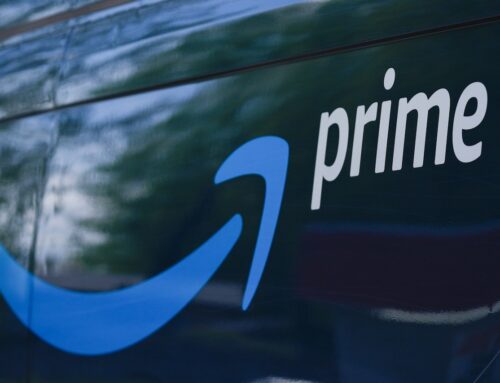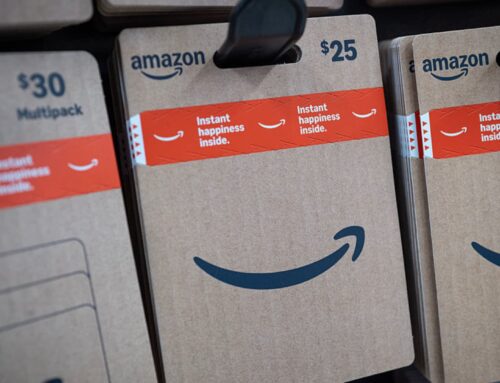Google Is Closer Than Ever to Breaking Up
April 19, 2025
Sign up for the Slatest to get the most insightful analysis, criticism, and advice out there, delivered to your inbox daily.
On Thursday, a federal judge found Google guilty of violating antitrust laws in two sectors of the online advertising marketplace. The case cuts into a major funding engine of the internet as we know it, as District Judge Leonie M. Brinkema deems Google liable for unfairly gaming the system at the expense of many, many smaller websites and companies over the years.
That means 2025 marks the third consecutive year in which a federal court has ruled that Google holds illegal monopolies and needs to make material changes—for the good of American consumers and the free enterprise system. In 2023, a federal grand jury found that Google’s Play Store app marketplace and in-app billing systems violated antitrust law; in 2024, a D.C. district judge ruled that Google has unlawful monopolies in the markets for online search engines and text-based advertising, and the government recommended that Google spin off ownership of its iconic Chrome browser. (The proceedings that will decide whether that will happen begin on Monday.)
As with last year’s verdict, the Thursday ruling was not a wholesale defeat for Google. This case has been litigated since 2023 in the U.S. District Court for the Eastern District of Virginia, regarding five charges that the United States government and 17 states brought against the company. One of those accusations—that Google’s misconduct had effectively robbed the federal government of money owed to it—was dismissed last year after the Big Tech giant furnished a $2.29 million check. The remainder of the case concerned allegations that Google maintained monopoly power in three display-ad-tech markets on the open web (i.e., across the worldwide internet ecosystem): advertiser ad networks, publisher ad servers, and ad exchanges.
Google was not found guilty of monopolizing advertiser ad networks—which, the judge writes, is a “term that is not common in the digital advertising industry.” The company was found to have violated Section 2 of the 1890 Sherman Antitrust Act by “willfully acquiring and maintaining monopoly power” in the latter two markets, however. Google was found to have leveraged its position by tying together its individual products in those fields and thus entrenching its chokehold over both areas, again in violation of the Sherman Act. Thus, Google is now on the hook for three of the original five charges, although the corporation announced Friday morning that it would appeal the decision. (In a statement to Slate, Lee-Anne Mulholland, Google’s vice president for regulatory affairs, wrote in part, “We won half of this case and we will appeal the other half.”)
When you visit a website like Slate, the ads you see are chosen by something called a publisher ad server. It’s a powerful system that tells advertisers someone has landed on the site, then displays an ad that fits that site’s audience. In the middle of this process are ad exchanges. They get a ping from the publisher ad server saying a new visitor is on the page, then quickly run an auction where ad networks launch competitive bids to show their particular ad on said page. The whole thing is incredibly complex, but it happens in the blink of an eye thanks to advanced software built by Big Tech companies.
Google’s sin, per the court, was to leverage its advantage as creator and seller of both a publisher ad server and an ad exchange to 1) establish itself as the domineering vendor of those two products, 2) tie the functions of those products together in ways that crowded out potentially viable competitors in those spaces, thus making websites dependent on Google’s tech, and 3) using that consolidated position to interfere with the ad-bidding and -selling process, artificially undercutting the amount of ad revenue that websites could have earned over the years.
Among other bits of evidence, the 115-page ruling cites communications from Google employees and ad-tech competitors to demonstrate that Google was very well aware of its power here, and often purposefully weakened the services it provided to websites because it knew they had nowhere else to turn for ad money. (In her statement to Slate, Mulholland wrote, “We disagree with the Court’s decision regarding our publisher tools. Publishers have many options and they choose Google because our ad tech tools are simple, affordable and effective.”)
As a writer for an online news publication supported in large part by advertising dollars, I have a bit of a personal stake in this case. It’s not unique to me; it’s something I share with all my peers and competitors in the increasingly brittle landscape of modern-day journalism, some of whom testified at this very trial on behalf of brands like the New York Times and Vox Media. There’s a reason that the American Economic Liberties Project referred to this ruling, in a Thursday-morning statement, as “a win for journalists, publishers, online content creators and the distributed open web.” And why the Check My Ads Institute pointedly stated that “Google’s unchecked power has distorted the ad tech ecosystem, disadvantaging publishers, advertisers, and ultimately, consumers.” Press-advocacy orgs like the News/Media Alliance and the Wisconsin Newspaper Association likewise praised the decision, calling Thursday “a big day for our industry.”
For years, Big Tech has consolidated power and retreated from its onetime support for digital journalism. Those of us left standing in the wreckage of this decimated profession haven’t been able to help but notice that ad revenue, the lifeblood for so many online writers and publications, has been sucked up by a few gargantuan digital networks. These platforms rode to their current level of prominence on the backs of websites whose links and coverage gave these platforms a reason to exist, via click and shares, reliable results within search indices, even high-quality training material for generative A.I. Yet Google—along with Facebook, Amazon, and others—gained for itself an unbreakable grip on the ad market that has torched the economy keeping trustworthy information free and open.
Now, thanks to this ruling, we know for sure something we’ve long suspected: This state of affairs didn’t come about as a natural result of the market’s invisible hand, but as a result of deliberate anti-competitive behavior.
By the late 2000s, Google had built out its in-house tech vendors, including AdWords (for advertisers) and AdSense (for publishers), into “the largest digital ad network in the world,” thanks to the massive popularity and utility of Google Search. But the story here begins with Google acquiring the platform DoubleClick for $3.1 billion in 2008, and absorbing both its publisher ad server, DoubleClick for Publishers (DFP), and its ad-exchange service, AdX.
The court did not deem the acquisition to be anti-competitive in and of itself. Rather, the anti-competitive conduct came as a result of how Google subsequently decided to apply its well-capitalized ad tech to the marketplace. Here’s where the trouble begins: By buying Double Click, Google forced both advertisers and publishers to use the search giant as the clearinghouse for ad sales, ad auctions, and ad displays all at once.
This naturally lent itself to abuse of the system. Through a feature called “First Look,” publishers reliant on DFP were all but forced into taking AdX-approved ads—even when other exchanges’ offerings were superior, in both quality and price—because Google gave AdX unfair advantages (first-bid rights, real-time bidding adjustments) that artificially narrowed the spectrum of supply-and-demand options that publishers and advertisers could offer each other.
Advertisers were unable to give publishers more money even when they wanted to, and publishers were unable to accept those higher rates even when such bids were clearly more desirable for their business. Google thus constructed a black box that left everybody in the dark and gave a false impression of the money at stake.
Many news publications suspected something was fishy, as Brinkema writes, and other organizations found a way to work around Google’s restrictions by finally giving ad exchanges the ability to also offer real-time bid changes, instead of one-time offers. An internal Google email realized that this was a “no-brainer” option that could decrease Google’s potential revenue. Quoting an “internal Google projection,” the decision notes Google’s recognition that opening up its ad marketplace and increasing transparency could cause both DFP and AdX to lose about 20 percent of their clients.
So the company implemented new programs to successfully stave off that threat. One of these was a feature called “Last Look,” which allowed AdX to view bids from advertisers and systematically increase its counteroffers in turn—a blatant edge in the market. Think of it as the ad-tech version of that scene from Oklahoma! where Jud Fry keeps upping his auction bid by “two bits.”
Google did eventually phase out Last Look, only to replace it with something called “Unified Pricing Rules.” This prevented websites from negotiating market-rate prices for ad placements. And this was a deliberate move from AdX programmers, who wanted to “limit the ability of publishers to set floor prices.”
This all came at a cost to advertisers, publishers, and even consumers. For all its power, “Numerous industry participants and customers testified that Google did not have lower levels of spam, fraud, or malware than other reputable ad tech providers.” One rival ad exchange “experienced a 40% decrease in revenue … which ‘damaged’ the company ‘very severely’ and contributed to 45% of its staff being laid off.” Another rival firm’s CEO wrote in a 2019 email that “almost every [publisher] ad server has gone out of business because of this integration.” Internally, a Google employee recognized that the company had made the system (known nowadays as the singular Google Ad Manager) so effective that for publishers to divest themselves “takes an act of God,” because “nothing has such high switching costs.”
Those who’ve been following the other Google trials may recognize some echoes from last year’s ruling. As I wrote at the time, regarding the text-based-search ad market that Google was found to have monopolized: “Google regularly makes runners-up for an ad spot seem ‘more competitive’ than they truly are, causing the actual top-rated bidders to pay more than what market pricing would normally dictate. Advertisers can’t opt out of these systems or from Google’s decision processes.”
All in all, it appears that Google has been eager to manipulate multiple markets for its biggest revenue source (ads) at the expense of others who also depend on that digital economy. “Google’s entire business model has allowed it to profit immensely by sucking money out of the journalism industry, the content creation industry, and publishing writ large,” Lee Hepner, senior legal counsel for the American Economic Liberties Project, told me in an interview.
Google will appeal this ruling, and that process alone will likely take a few more years. The federal and state governments who lodged this case want to break up Google’s simultaneous hold over the ad market, which means they’ll likely suggest that the whole Google Ad Manager system get broken up. Hepner pointed out that there’s a bipartisan bill pending in the Senate, called the AMERICA Act, which, if passed, would prevent highly capitalized firms like Google from exercising control over the demand and supply sides of the advertising biz.
Google certainly recognizes the seriousness of this moment. The C-suite prevented staffers from discussing the antitrust suits at work before an agreement with the Alphabet Workers Union mooted that prohibition. In an internal memo leaked to Axios on Thursday, Mulholland insisted to employees that Supreme Court precedent would be on the company’s side.
If that doesn’t pan out for Google, then there might be room yet for an ad-supported web ecosystem, supported by fairer monetary opportunities for smaller advertisers and publishers, that would allow non-Google sites to thrive once again. Plus, this suit further bolsters historic antitrust precedent as applied to Big Tech—the ruling, notably, cites cases like last year’s Google verdict, the Federal Trade Commission’s successful block of a medical ad-tech merger, and even Epic Games’ partly successful antitrust suit against Apple.
Large companies have held the free internet hostage for too long, and the wreckage is plain to see. But Google’s latest defeat shows that Big Tech antitrust has some life in it yet.
Search
RECENT PRESS RELEASES
Related Post





